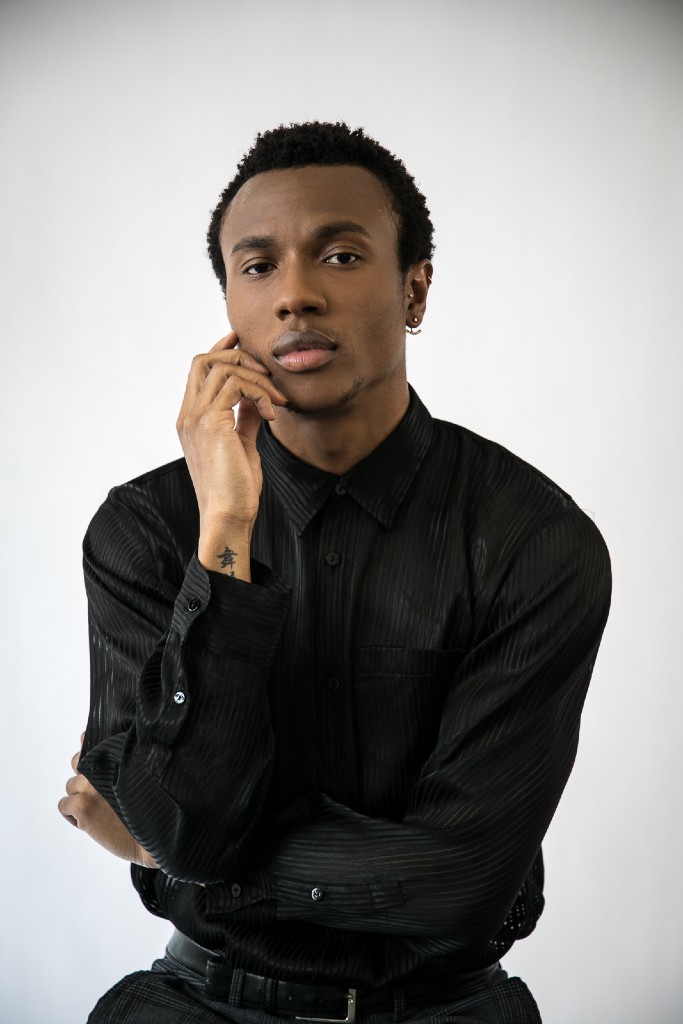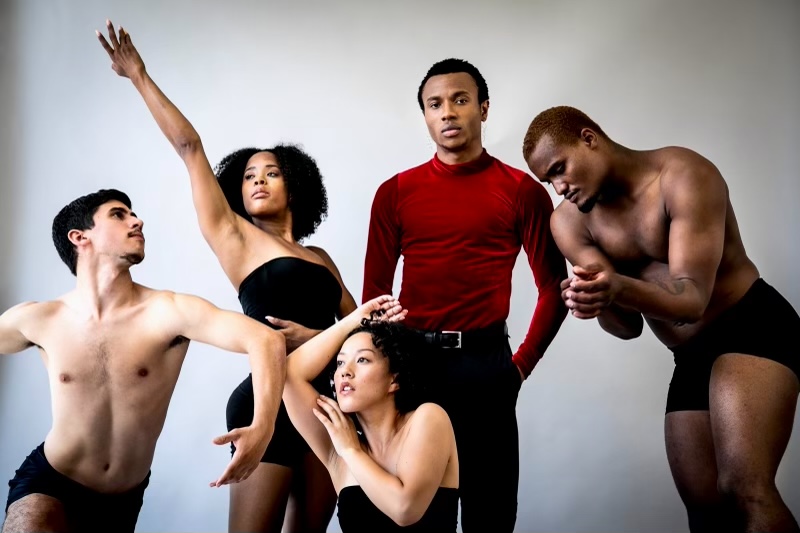
It’s that time of year again. Spring is almost here and as we anticipate longer, warmer days and the budding of new foliage, the Joffrey Academy of Dance presents their group of budding dancers paired with four emerging choreographers in their annual Winning Works (WW) program. After a covid cancelation in 2020 and move to digital in 2021, this year’s four world premieres will take place on the intimate stage at the Museum of Contemporary Art (MCA) debuting this weekend over four performances March 18 – 20. I hope you have your tickets, because the shows are already sold out! That said, keep reading to meet one of the winning choreographers who you need to know. Pay attention: you will be hearing his name more and more.
Derick McKoy, Jr. is busy, talented, and ambitious. Currently he is in grad school studying performing arts administration at New York University (NYU), works full-time as the Individual Giving Assistant in the development department at Alvin Ailey American Dance Theatre, and runs his own company McKoy Dance Project. A natural choreographer who has been creating dances since he was a kid, he didn’t start his formal dance training until age 14, but earned a position in the second company of Jubilee Dance Theatre by age 15. “In middle school I thought I was going to be a t.v. actor, but my school started a dance team and I changed my mind – I’m going to do that,” McKoy said. “I quickly became dance captain and was choreographing routines with the coach. I was also student council president so I launched a talent show for the whole school.” This drive and quick rise continued through college.
He received a scholarship to the Ailey School BFA program at Fordham University. “I love ballet, Horton, and Graham. That’s the perfect place to get those three,” he said. “It was very intense. Burnout was real, but it made me strong.” He capitalized on many opportunities there including dancing in the Ailey Spirit Gala, the groundbreaking of Vessel on Hudson Yards, and on t.v. shows Conan and Pose. He then performed with Nimbus Dance for two years and freelanced with The Black Iris Project before incorporating his own company in 2020.

McKoy is in Chicago this week for the premiere of his new work Road to Flames created on 20 dancers from the Joffrey Studio Company and Academy Trainees. We spoke via Zoom last week about his career and choreographic process. Here are excerpts of our conversation.
Why did you decide to start your own company?
I always wanted to have a company and be an artistic director. I just thought it would be later in my career. When the world shut down during Covid, I went home to Miami for a few months to recalibrate. When I came back George Floyd’s murder happened. It was the first time I self-reflected as a Black, Queer person – that could be me. It awoken something within me. I made a commitment. I can no longer use my choreography to not say something authentic about real issues. My work before that was performative. It was still dramatic and told a story, but now I can really get to authenticity and real human stories. Humanism, but also social justice. I was commissioned to do an evening-length work. Looking Out: A Stonewall Memorial incorporated two 45-minute pieces (Bloom and Pride). We performed it with the Opus 87 Piano Quartet in 2019. The dancers said they liked dancing under the name McKoy. The next year I incorporated.
How is being the leader, the artistic director?
It’s important to me. I’ve been frustrated by the lack of opportunities for people of color. Even the opportunities that do come are few and far between. You see the same choreographers getting the same opportunities. A mentor told me, “If you aren’t getting the opportunities you want, go make them.” I took that and ran with it. If no one is going to allow me to make dance, I’ll just do it. I expanded it to other people. I realized that dance is not my passion. Mentoring is my passion and dance is the vehicle in which I do it. I feel so confident in that intention. I mentor through dance. My company is big on allowing emerging choreographers the chance to work with professional dancers and dancers the option to explore other facets of their identities and talents. I like talkbacks. I like hearing the audience and the dancers conversate about the process and what they discovered about themselves. That’s the fulfilling part for me. I’m trying to create a nurturing environment.
How did you come to apply for Winning Works?
I was introduced to Winning Works fairly early. I wanted to apply when I was still in school, but couldn’t find the application. I haven’t told many people this, but when I pictured where my career track would go…Joffrey was one of the companies I was pulled to. The environment was like a company I wanted to be in, like a family. Now, I feel like I’m part of the family. I met everyone – Greg Cameron (CEO & President), the Board of Directors, the Executive Team…the Community Engagement department came and introduced themselves to me. I’ve never experienced that before. It’s usually mainly transactional. You come in, do your work, and leave. To have real conversations with people who are concerned with the field and where we’re going…it really spoke to the level of investment and wanting to do it the right way. It was apparent in the students, in the Studio Company, and the Trainees. That level of care was there from the top down. That breeded a very open and warm environment with the dancers. I think Joffrey created an environment where they can be their optimal best.
Talk about your piece Road to Flames.
It’s in three movements. I’m in a transition period in my life. A lot of my works texturally and sensationally go off of my emotions…how they feel physically in your body. How does passion feel? Your temperature rises and you feel hot, so that image of fire came up. Each section goes through a phase of fire. The first section is “Spark.” We played with the texture of combustion like the flicking of a match and then it fizzles out. There’s a lot of accented initiations with smoking or decay after. That section runs up the energy with speed. That goes in contrast to the second section “Ember,” a smoldering flame. The quality being like a candle flame that has this mesmerizing flicker or little dance that it does. The section has more partnering and romance. The last section is called “Wildfire,” It’s kind of crazy. The music is very fast and staccato, chaotic and dynamic. Then there is a pseudo fourth section (no title) that transitions to this airy, elongated sound that goes in and out like how the spark of a flame can grow into a fire and that fire can be destructive and bring chaos, but it can also bring change and rebirth. There’s always this glimmer of hope and change of good that can come out of hardship or drastic changes.
What do you want the audience to take away?
I really want them to feel the sense of energy and urgency that’s built on stage. I don’t want them to feel anxious but pressurized so that at the end they feel a sense of relief. To show that tension can build but you can also breathe. I want the audience at the end to exhale. The dancers are amazing. I’m really proud of the work they put in. I want the audience to see their power.
You can learn more about McKoy’s Road to Flames in this Inside the Studio video. And view the full piece on The Joffrey Ballet’s YouTube Channel beginning March 31st.
